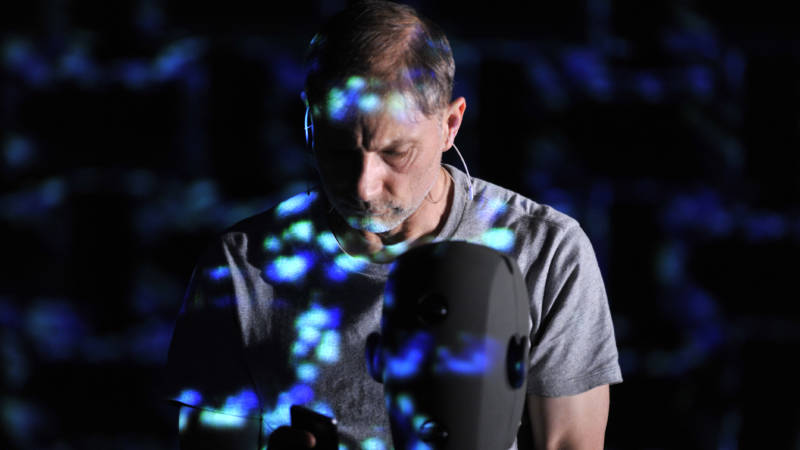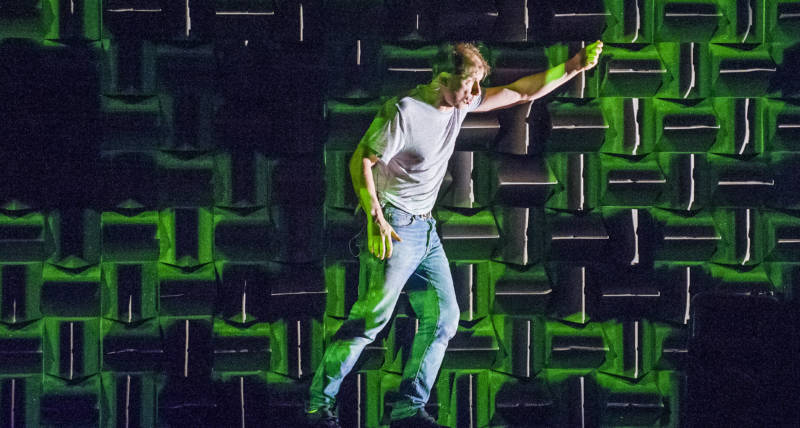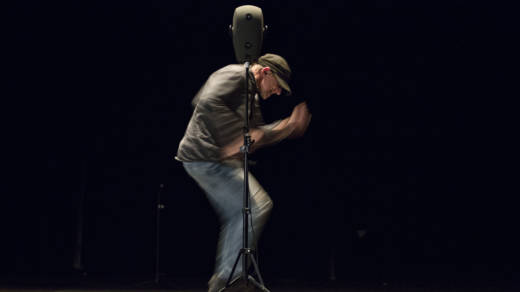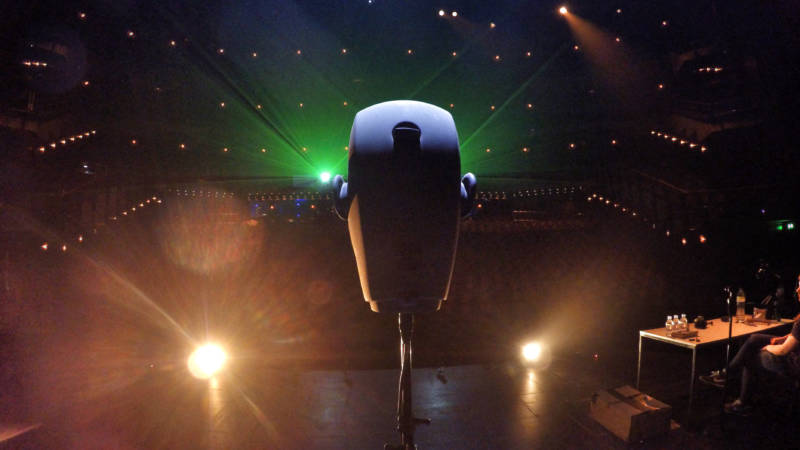The British company Complicite’s production of Simon McBurney’s one-man high-tech extravaganza, The Encounter, has the sharp kick of a Hollywood pitch: National Geographic photojournalist Loren McIntyre slips into the Amazon jungle on assignment, gets lost, and spends two months with the remote Mayoruna tribe, whose members alternately dismiss, torture, and nurse him back to life. Along the way, he learns to speak telepathically to tribal elders, and feels that he has somehow reached the beginning or end of time.
It’s a classic setup, reminiscent of Joseph Conrad’s Heart of Darkness, Werner Herzog’s Aguirre, the Wrath of God, not to mention Ridley Scott’s Alien and Homer’s The Odyssey. The promise of getting lost is always tantalizing, which of course is the pleasure of the journey — or at least the tale of one.

The show begins with a rather amusing description of its sophisticated sound technology. Under McBurney’s direction, the entire audience dons headphones and gets a lesson in the mysteries of sound. Center stage is an amazing piece of equipment known as a “binaural microphone.” With it, McBurney can whisper into our collective ears, as if he were standing right beside each of us.
You don’t doubt the theatrical potential of such technology, but you do wonder what’s next: an explanation of the wonders of programmable lighting boards, or the physics of counter-weight rigging systems? McBurney takes what is essentially a tool and treats it as a philosophical insight of startling scope. What we’re here for is McIntyre’s jungle freakout, but what McBurney gives us is a lecture on method and themes.
He makes three claims up front: that “stories are how we understand life,” that the “past is probably more important to you than your present,” and, with the help of a recording of Marcus du Sautoy, a math professor at Oxford University, that time is “just a fiction. Something that we have made up in order to make sense of the world.” Yes, all that might be true, but it feels like a dodge, a way of pre-declaring the importance of the work rather than taking a chance with actual art.

McIntyre’s story is fascinating — full of nagging inconsistencies and strange motivations. What was he expecting when he ordered his pilot to drop him at a riverbank beach and come back to get him in two or three days, at least 400 miles from any kind of civilization? And why did he follow the Mayoruna into the jungle without the slightest idea of how to get back? Yes, McIntyre wanted pictures and a terrific story. But it seems that more than anything else, he wanted to get lost.




